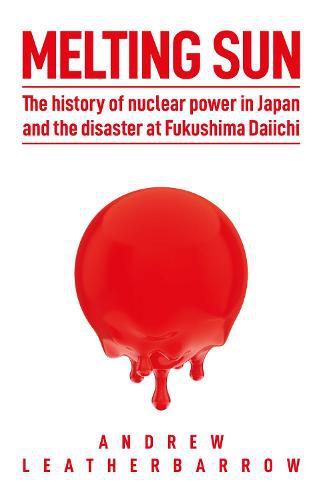Readings Newsletter
Become a Readings Member to make your shopping experience even easier.
Sign in or sign up for free!
You’re not far away from qualifying for FREE standard shipping within Australia
You’ve qualified for FREE standard shipping within Australia
The cart is loading…






This title is printed to order. This book may have been self-published. If so, we cannot guarantee the quality of the content. In the main most books will have gone through the editing process however some may not. We therefore suggest that you be aware of this before ordering this book. If in doubt check either the author or publisher’s details as we are unable to accept any returns unless they are faulty. Please contact us if you have any questions.
Almost 24 hours to the minute since the tsunami hit Fukushima Daiichi, Unit 1 exploded. The building wrenched apart, sending shards of irradiated concrete and metal knifing through the air in all directions. The reactor’s massive heavy-duty gantry crane bent like a twig and collapsed onto the refuelling floor control room, crushing everything that wasn’t expelled in the blast. Outside, chunks of debris rained down on the fire crew, injuring five and shredding the hoses they had just laid. Among the injured was the plant’s own fire chief, whose arm snapped when a piece of steel hurtled through the window.
In March 2011, a 15-metre tsunami wiped out long stretches of Japanese coastline, killing thousands. Flooded cooling systems at the Fukushima Daiichi nuclear power plant failed as hundreds of men and women battled to save three reactors from destruction in what became the most expensive industrial accident of all time.
Melting Sun spans 150 years of little-known history to retell how Japan evolved from the first victim of atomic energy to its most passionate supporter. It is a story of innovation and determination, but also of collusion, deception, overconfidence, failure and, ultimately, death. From a nuclear ship stranded at sea after leaking radiation on its maiden voyage, to the unimaginable final days of two men treated for extreme over-exposure, to Fukushima itself - the only accident comparable with the infamous Chernobyl disaster.
$9.00 standard shipping within Australia
FREE standard shipping within Australia for orders over $100.00
Express & International shipping calculated at checkout
This title is printed to order. This book may have been self-published. If so, we cannot guarantee the quality of the content. In the main most books will have gone through the editing process however some may not. We therefore suggest that you be aware of this before ordering this book. If in doubt check either the author or publisher’s details as we are unable to accept any returns unless they are faulty. Please contact us if you have any questions.
Almost 24 hours to the minute since the tsunami hit Fukushima Daiichi, Unit 1 exploded. The building wrenched apart, sending shards of irradiated concrete and metal knifing through the air in all directions. The reactor’s massive heavy-duty gantry crane bent like a twig and collapsed onto the refuelling floor control room, crushing everything that wasn’t expelled in the blast. Outside, chunks of debris rained down on the fire crew, injuring five and shredding the hoses they had just laid. Among the injured was the plant’s own fire chief, whose arm snapped when a piece of steel hurtled through the window.
In March 2011, a 15-metre tsunami wiped out long stretches of Japanese coastline, killing thousands. Flooded cooling systems at the Fukushima Daiichi nuclear power plant failed as hundreds of men and women battled to save three reactors from destruction in what became the most expensive industrial accident of all time.
Melting Sun spans 150 years of little-known history to retell how Japan evolved from the first victim of atomic energy to its most passionate supporter. It is a story of innovation and determination, but also of collusion, deception, overconfidence, failure and, ultimately, death. From a nuclear ship stranded at sea after leaking radiation on its maiden voyage, to the unimaginable final days of two men treated for extreme over-exposure, to Fukushima itself - the only accident comparable with the infamous Chernobyl disaster.